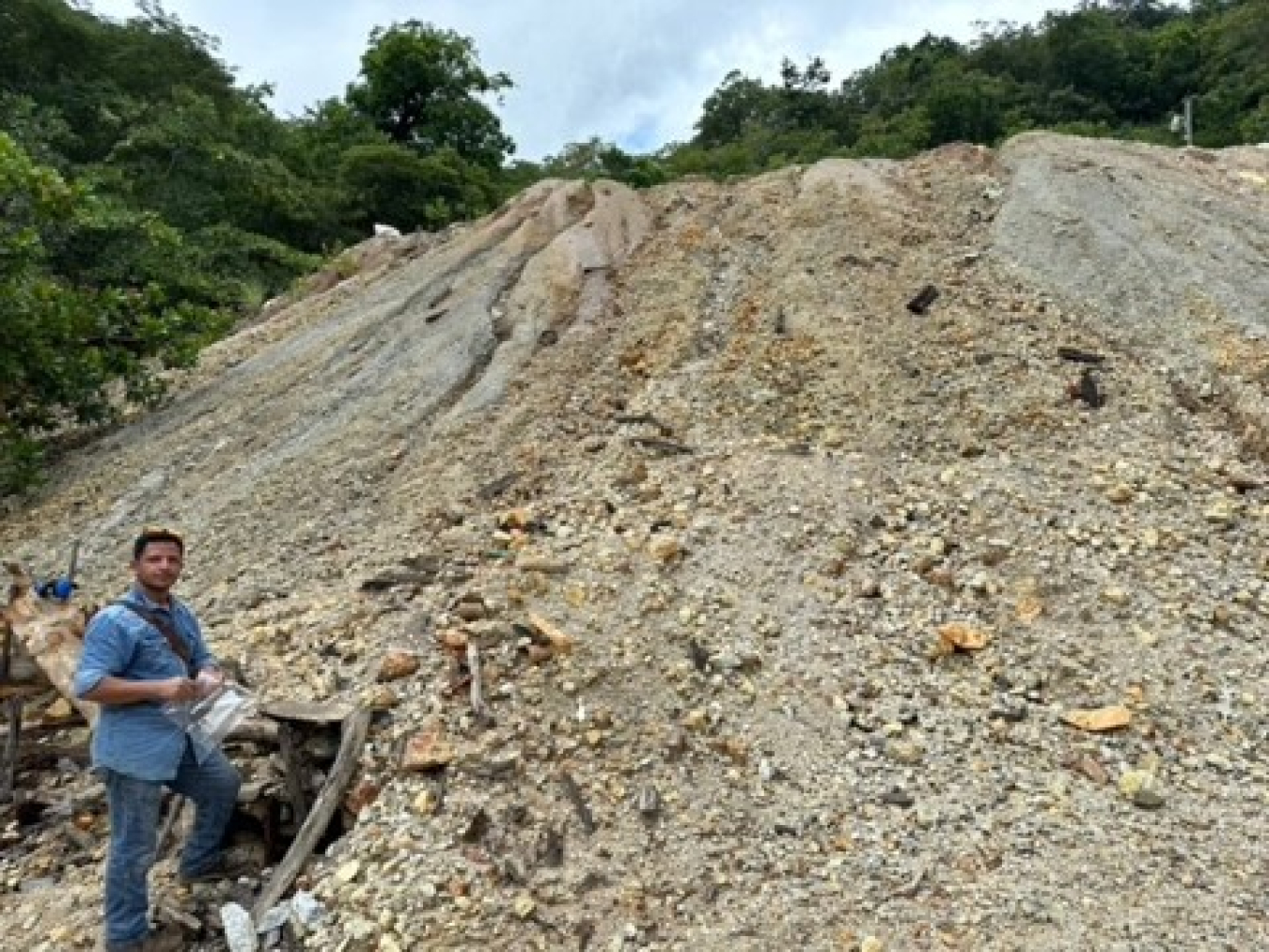Since graduating from the Energy I-Corps program, EC Leach’s technology has been licensed in the battery sector and other companies are pursuing licenses including in the mining sector.
Office of Technology Transitions
October 16, 2024The mining industry produces sediment byproducts that are typically considered waste, despite the valuable metals within. This Energy I-Corps team, funded by Department of Energy’s (DOE’s) Advanced Manufacturing Office*, focused on recovering these valuable metals for use in batteries. The Office of Technology Transitions' Energy I-Corps program offers an intensive, 2-month commercialization training to National Laboratory teams to set their clean energy technology up for a successful market launch. Team Electrochemical (EC) Leach from Idaho National Laboratory (INL) participated in Cohort 12. Since graduating from the program, the team’s technology has been licensed in the battery sector and other companies are pursuing licenses including in the mining sector.
Luis Diaz Aldana, an electrochemical engineer and scientist at INL, and his team initially created the EC Leach technology to extract precious metals from end-of-life lithium-ion batteries. The electrochemical process retrieves (or “leaches”) the materials from batteries into one mass, which is then diluted and divided back into individual critical metals.
“We knew you could recover the metals and put them back into new batteries, but we didn’t know who would be interested in the process,” Aldana said. “Energy I-Corps helped us identify ideal target customers, some were expected and others we had never thought of. It was such a valuable experience because it helps you get out of your comfort zone.”
The outreach paid off. Airtronics, Inc., an aircraft manufacturing facility and defense contractor, recently negotiated a license with INL to begin scaling the battery materials extraction process.
“What made [the technology] immediately attractive is the growing demand for recycled materials,” Frank Oliver, Airtronics’ chief technology officer said. “It fits into a number of different processes, and we are designing a scaled-up system.”
The current system can produce half a gallon of critical materials per day, with a 98% recovery rate; the goal for a pilot is increasing to 5-to-10 gallons. From there, Airtronics will project how they can produce 500 gallons of material a day, the equivalent of two electric vehicle batteries worth of precious metals.
“If you look across the United States, there is an ample [battery] supply and large recycling companies have already made deals with auto manufacturers to begin collecting [batteries],” Oliver said. “Since EC Leach is a power-assisted electrochemical leaching system, it can easily slot into existing flows and supply chains. Furthermore, if you power it from a renewable energy source, you can eliminate the carbon footprint.”
Another commercialization lead started from within the team itself. Juan Carlos Villatoro served as the industry mentor for the INL EC Leach’s Energy I-Corps team. Villatoro is CEO of Alquimista, a metals processing company that focuses on securing supply chains of minerals critical to national security. Industry mentors, like Villatoro, bring real-world experience and guide their teams through the technology commercialization learning process by bringing an external, industry perspective. Villatoro had to hike out of a mining site in a Columbian rainforest to a high point so he could get a signal to join team meetings.
“I had to do this for each daily meeting,” Villatoro said. “But when they asked me to be a mentor, I said: ‘Yes, I’m all in.’”

After working with the INL team through Energy I-Corps and learning more about their technology, Villatoro now plans to license INL’s electrochemical technology for use in another market beyond batteries - mining. The INL technology recovers precious metals from gold and silver mining waste for reuse.
“EC Leach can take waste from the mining industry and extract high-yield minerals that end up being more valuable than the gold and silver originally mined,” Villatoro said. “We discovered platinum, iridium, and more in [waste] concentrates—all of which are in high demand throughout the supply chain. This makes it easier to recycle and reuse these materials” and this means the U.S. can import these materials from Latin and South America, diversifying the resource pool. The extracted minerals, such as cobalt, are essential for the creation of batteries, specifically the lithium-ion batteries used in electric vehicles.
Now, Villatoro’s company, Alquimista, has a $1.2 billion incentive investment package for a Platinum Group Metals refinery in El Salvador that will integrate the EC Leach technology into its system, set to be completed in 2025.
EC Leach’s story exemplifies the transformative power of innovative technology and collaborative industry efforts, already making an impact from revolutionizing mining waste management in South America to advancing sustainable battery recycling in the United States.
*In 2023, the Advanced Manufacturing Office restructured to the Industrial Efficiency and Decarbonization Office (IEDO) and the Advanced Materials and Manufacturing Technologies Office (AMMTO).

